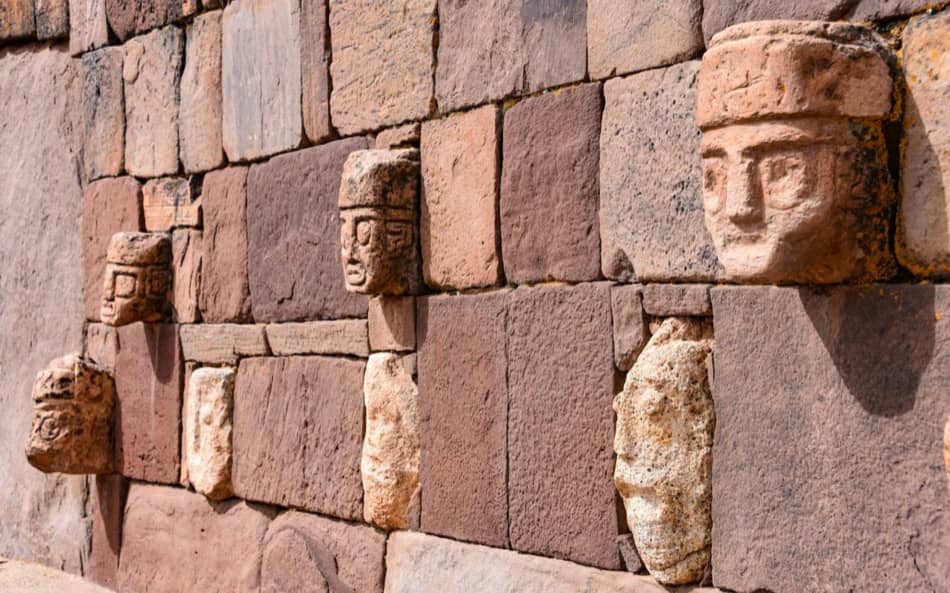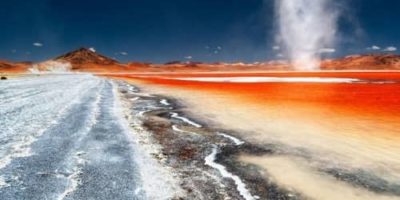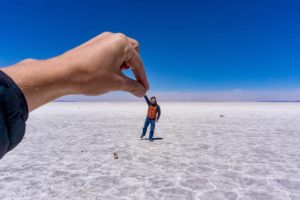Tiwanaku is a pre-Inca city that was built around the 3rd century BC by the Tihuanacotas, making it one of the most successful cities in the area.
So is Tiwanaku worth visiting? Tiwanaku is definitely worth visiting. The megalithic ruins of Tiwanaku are one of the archaeological wonders of South America. Tiwanaku is a site with so much history that it should be on everyone’s must-visit list.
Here’s everything you need to know about the ruins of Tiwanaku.

The best way to visit Tiwanaku is a day trip from La Paz. Although you can make the trip on your own, Tiwanaku is a site with so much history that it’s a very good idea to hire a guide.
On the contrary, if you go privately you may have problems with transportation due to the low vehicle traffic in the area. It is worth mentioning that the entrance fee to this place is US$ 12 (80 Bs), which is paid when entering Tiwanaku.
If you haven't booked your hotel yet, you can get the best deals on hotels here.
Contents
Why is Tiwanaku important?
Tiwanaku was the center of the Tiahuanaco civilization, a pre-Inca culture that based its economy on agriculture, livestock and architecture. The Tiahuanaco civilization covered the territories of the Collao plateau between western Bolivia, southwestern Peru, northern Argentina and northern Chile.
These were the regions from which it radiated its technological and religious influence to other civilizations contemporary to it.
How old is Tiwanaku?
Tiwanaku is between 1800 to 1900 years old. Tiwanaku, one of the main precursor cultures of the Inca, was a society whose main city, the one that gives its name, lived its expansive phase between the years 700 and 1200.
Where is Tiwanaku?
Tiwanaku is located near the southern shore of Lake Titicaca. The two closest cities to this archaeological center are La Paz (Bolivia) and Puno (Peru).

How to get to Tiwanaku?
From La Paz: It is the closest large city to the ruins, located only an hour away by car.
From La Paz you can buy day tours, which are quite comfortable and include transportation, lunch and a guide, allowing you to fully enjoy this place.
If you do not have a vehicle, there is public transportation from the General Cemetery of La Paz (red on the map), with a fee of approximately 2 dollars (15 Bs). If you are looking for a more comfortable trip, we recommend you go to the bus terminal (yellow on the map) where you can travel for about 7 dollars (50Bs).
2. From Puno (Peru): If you are in Peru, a very good way to get to these ruins is to walk along the shores of Lake Titicaca from the city of Puno. This route is not very conventional, because most of the transportation is done through Copacabana. To get to Tiwanacu from this city, you must take the 3S highway to the town of Desaguadero (border of Peru and Bolivia), in a two and a half hour trip. Passing the border controls, take Highway 1 towards La Paz, and after about 44 kilometers, you will arrive at Tiwanaku.
If you are traveling without your own vehicle, the best option is to take a taxi to Desaguadero, cross the border on foot and take a ride to La Paz. You can take taxis that will take you directly to the town of Tiwanaku, or you can take a bus to La Paz that will leave you on the road to the ruins one kilometer from the town.
Opening Hours & Entrance
If you are traveling on your own, one thing to keep in mind is the opening hours. Tiwanaku is open from 9:00 to 16:00, so we recommend you to go early, so you can get to know the whole place. If for any reason you cannot get a ride back to La Paz, you can stay in the small town next to the ruins.
The entrance to Tiwanaku costs 100Bs for foreigners and you can visit two museums within the enclosure. Photos are not allowed inside the museums.
What can I see in Tiwanaku?

Akapana Pyramid
It is the most outstanding building in Tiwanaku, although it is still partially excavated. It has a height of 16 meters, but at its base it occupies an area of 200m². This structure was one of the most important of the ceremonial center in pre-Inca times.
Kalasasaya Complex
Also called Temple of the Standing Stones, it is a religious place built by the Tihuanacotas in the first centuries of our era. With an extension of 2 hectares, this ceremonial palace houses several of the most important structures of the complex, such as the Gate of the Sun, the Temple of the Faces and the Ponce Monolith.
Kalasasaya is surrounded by walls made of huge stone blocks that fit together with millimetric precision. Some say that the Tiwanaku culture must have mastered a technique similar to a laser beam using the sun’s rays and crystals in order to make such precise cuts in the stone.
The Sun Gate of Tiwanaku
It is a structure made of a single giant piece of andesite that weighs 44 tons. Try to visit the Sun Gate of Tiwanaku as early as you can if you want to get a good picture. The sunlight gives it until mid-morning, but then it stays in shadow.
The gate is not in its original place today. It was in the center of the structure known as Kalasasaya where it functioned as a calendar. The central figure of the lintel is related to the god Viracocha, the Sun King.

Temple of Faces
It is a small temple excavated downwards and covered with red sandstone walls. In these walls we can find the faces of 175 individuals carved. Some are animal representations, like the puma, the fish or the condor. Others are human faces, some of which have a ball on the cheek, indicating that the ritual of chewing coca was already present.
The two white faces found among the others are notably different from the rest. Quickly, some have begun to point out that they are the faces of aliens. There is also a face with Asian features known as “El Chino”.
Putuni
It is a funeral site for the upper class of Tiwanaku: priests, nobles and warriors. On both sides of the rectangular enclosure are double walls, forming rooms that serve as tombs. In them 18 mummies have been found. One of them can be seen in the ceramic museum of Tiwanaku. The rest are in the archaeological museum of La Paz.
Puma Punku
Puma Punku is a monumental complex located southwest of Kalasasaya. In Puma Punku you can find colossal structures, such as a court in the west without walls, a central esplanade, a mound of megalithic stones and some large walls. The attraction of this area is the perfection with which these stones are carved. Some of these rocks are perfectly smooth and form perfect angles.

Cat Museum and Lithic Museum of Tiwanaku
These museums are located near the town of Tiwanaku. Here you can see more detailed aspects of the Tihuanacotas, reflected mainly in their anthropomorphic vessels, animal-shaped ceramics and the kerosene vessels.
Megaphones of Tiwanaku
At the entrance to the site we will find two stone blocks on the ground with a large hole in the middle. If we stand behind them, we can use them as voice amplifiers and experience how this simple mechanism replaces technology.
What’s the weather like in Tiwanaku?
Tiwanaku is located in the Bolivian highlands at 3855 meters above sea level. Its climate is arid-cold, which allows for sudden temperature changes throughout the day. The average temperature during the day fluctuates between 15 and 20°c, but after sunset it can drop to 0°c.
We recommend that you keep warm when visiting the ruins early in the morning. We also recommend that you wear comfortable clothing, plenty of water and sunscreen, to survive the afternoon heat.
Due to the altitude, another problem you might have is altitude sickness. To overcome this condition, you should drink plenty of water, not smoke and eat light food before and during your trip to the highlands.
If you are in Bolivia, you cannot miss the fascinating ruins of the spiritual and political centre of Tiwanaku. They are a World Heritage Site and also show an amazing degree of refinement. It is a place wrapped in mystery that is certainly worth a visit.
I hope that with these recommendations and tips to visit Tiwanaku you will be encouraged to include it in your list of must-do’s for traveling in Bolivia.























Leave a Reply
You must be logged in to post a comment.